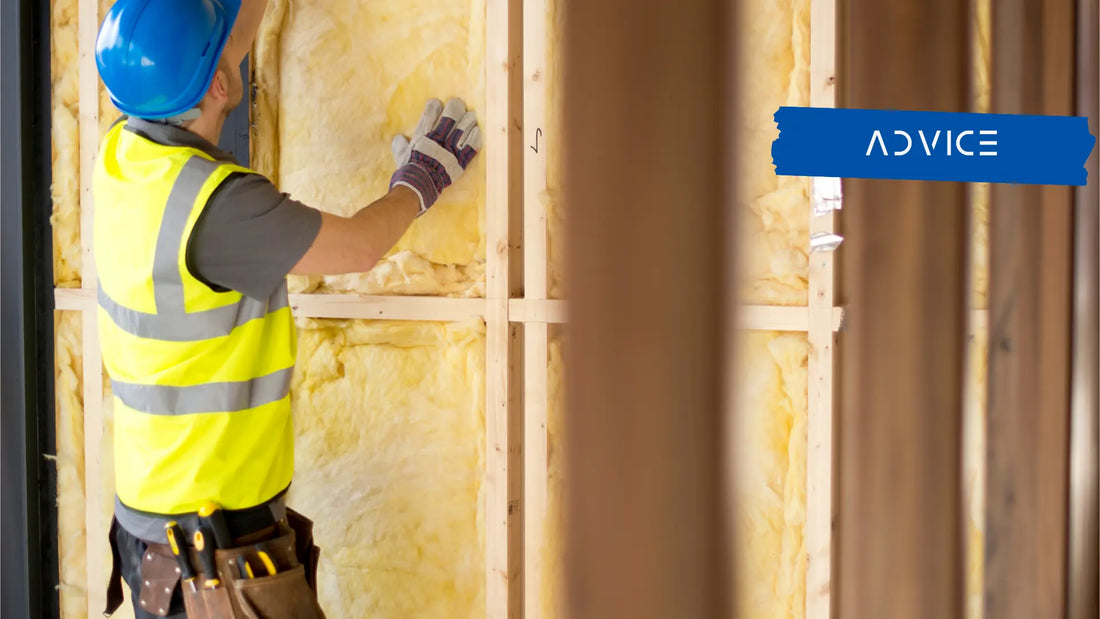
DIY Soundproofing: Tips and Tricks
Tanya IlievaShare
📖 Reading time: 4 min and 45 sec
You know the exact soundscape you want for your place. You can pick up even the smallest change in sound levels. This sensitivity has its downsides though, as you can hear your neighbours talking, walking, and sometimes even thinking out loud. If you're considering soundproofing your home but don't know where to start, you can explore some do-it-yourself (DIY) soundproofing tips and tricks before seeking a professional consultation. We've outlined these in the article.
The Science Behind Effective DIY Soundproofing: How and Why These Tips Work
Sound travels through various mediums by creating vibrations, and effective soundproofing relies on four primary methods: adding mass, damping, decoupling, and filling gaps. Adding mass with heavy materials like solid-core doors reduces vibration, while damping materials like soundproofing foam absorb sound waves. Decoupling involves creating air gaps to disrupt sound wave transmission, and filling gaps with materials like weatherstripping stops sound from leaking through tiny openings. Studies have shown that these methods can decrease sound transmission by up to 50%. Understanding these principles helps explain why simple steps, like using soft furnishings or sealing gaps, can significantly improve soundproofing in your home.
Understanding Soundproofing Materials
Sound-Absorbing Materials
Materials like fibreglass, rock wool, and acoustic foam absorb sound waves, reducing echo and reverberation. These materials are ideal for creating DIY soundproofing panels and can be used in various applications throughout your home.
Sound-Blocking Materials
Dense materials like mass-loaded vinyl and soundproof drywall are designed to block sound transmission. These materials add mass to walls, floors, and ceilings, preventing sound from passing through.
Combining Methods
For the best results, combine sound-absorbing and sound-blocking materials. This approach tackles both airborne noise and structural vibrations, creating a more effective soundproofing solution.
10 Steps Closer to DIY Soundproofing
1. Furniture Placement
Placing heavy furniture like sofas, bookshelves filled with books, wardrobes, and large cabinets against walls can effectively block and absorb sound. This technique not only enhances the functionality of the space but also adds an aesthetically pleasing touch to the room.

2. Soundproofing Curtains and Blinds
Consider investing in thick, heavy curtains made from soundproofing materials such as velvet or specialised acoustic fabrics. These curtains are designed to absorb sound waves, reduce echo, and prevent outside noise from entering your room. For even more effective noise reduction, you can pair these soundproof curtains with blinds to create an added layer of sound insulation.
4. DIY Soundproofing Panels
You can make your own soundproofing panels by using materials like fibreglass or rock wool insulation. These materials can be enclosed in a wooden frame and covered with fabric. Once completed, these panels can be mounted on walls to absorb sound and minimise noise transmission. This DIY approach provides a cost-effective alternative to using professional acoustic panels.
5. Seal Gaps and Cracks
Did you know that sound can travel through even the smallest gaps and cracks? One effective way to reduce noise leakage is to use acoustic caulk to seal gaps around windows, doors, electrical outlets, and any other openings in your walls. This simple step can make a significant difference in minimising unwanted noise.
6. Carpets and Rugs
To reduce noise in your space, consider covering hard floors with thick carpets or rugs. Adding a layer of soundproof underlay beneath the carpet can provide extra noise reduction, making your space quieter and more comfortable.

7. Door Sweeps and Seals
To minimise sound leakage, it's important to address the gaps under doors, which are often the source of unwanted noise. One effective solution is to install door sweeps at the bottom of doors to block sound from passing underneath. Additionally, adding door seals around the edges of the door can provide further insulation to prevent noise from entering or escaping the room.
8. Soft Furnishings
Adding soft furnishings such as cushions, throw blankets, and upholstered furniture is a great way to enhance the comfort and style of your space while also reducing noise levels.

9. Hollow-Core Door Replacement
Consider replacing hollow-core doors with solid-core doors to reduce the amount of sound that passes through. Solid-core doors are denser and more effective at blocking noise compared to hollow-core doors.
10. DIY Sound Barriers
When looking to reduce noise, consider using large, dense items as temporary sound barriers. For example, you can strategically place items such as large canvas paintings, thick folding screens, or a stack of heavy blankets to create makeshift soundproof barriers.
Bonus Tips for Specific Scenarios to Improve Your Place's Sound
Improving the Sound in Home Studios
If you’re setting up a home studio, achieving high sound quality is crucial. One effective method is to use bass traps in the corners of your room. Bass traps are designed to absorb low-frequency sound waves, which can otherwise cause a booming or muddy sound. For example, placing triangular foam bass traps in the four corners of your studio can help manage these problematic frequencies and improve overall sound clarity.
If you're not sure how to begin, try this simple clap test:
Clap your hands loudly and pay attention to any echoes. Walk around the room while clapping to pinpoint areas where sound bounces the most. This can assist you in deciding where to position sound-absorbing materials.

Reducing Noise from Noisy Neighbours
Living next to noisy neighbours can be frustrating. One practical solution is to install a second layer of drywall with a damping compound. This creates a resilient channel that absorbs and dissipates sound vibrations. Another option is to select soundproof panels with an easy DIY installation, like DECIBOARD - highly effective wall soundproofing solution with proven excellent performance on drywall partition, brick wall, and aerated concrete brick wall. It will make a noticeable difference, particularly with mid to high-frequency sounds.
Dealing with a Rental Apartment
If you’re renting, permanent modifications might not be possible. Instead, consider using removable solutions like thick, heavy curtains or acoustic panels with adhesive strips. Heavy curtains can reduce outside noise by up to 10 dB. Additionally, consider using freestanding bookshelves filled with books against shared walls. This can add mass and absorb sound, additionally reducing noise transmission.
Damping Sound in Large Rooms
Large rooms can be challenging to soundproof due to their size and open space. To dampen sound effectively, try hanging acoustic clouds or baffles from the ceiling. These can absorb sound waves that would otherwise bounce around the room. Using area rugs and carpet tiles can also help to create a quieter environment.
Improving Acoustics in Small Spaces
Small spaces often suffer from excessive echo and reverb. To combat this, use diffusers alongside absorptive materials. Diffusers scatter sound waves, reducing the intensity of reflections. For instance, placing wooden or foam diffusers on walls can help distribute sound evenly throughout the room, enhancing the overall acoustic quality. This is particularly useful in home offices or small studios where clarity is essential.

Creating a quiet, peaceful home doesn’t have to be expensive or complicated. These practical, affordable, and effective methods can change the soudscape of your place. However, if you need a professional advice - contact us today and don't postpone to enjoy the newfound tranquillity in your home!



